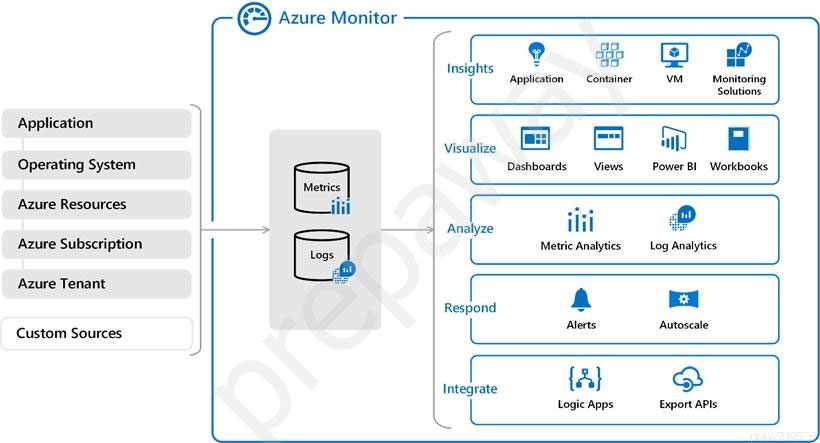
The figure that follows provides a high-level overview of Azure Monitor. The two primary forms of data that Azure Monitor uses are metrics and logs, and these data storage are located in the middle of the figure. The sources of monitoring data that fill these data repositories are shown on the left. The various tasks that Azure Monitor carries out with this data are shown on the right. Analyzing, alerting, and broadcasting to external systems are some examples of this.
Please select 2 correct answers
‥ Set enabledForTemplateDeployment on the key vault to true in order to gain access to it during template deployment.
‥ The Microsoft.KeyVault/vaults/deploy/action permission for the scope of the resource group and key vault is required for the person who installs the template.
Your key vault's contents are duplicated both locally and to a second region that is at least 150 miles away but still part of the same geographic area. This keeps the strength of your keys and secrets. For information on certain area pairs, see the Azure paired regions document.
For instance, your application must exchange some information with both Europe West and Europe North. Try to keep these to a minimum. Put these in one of the two regions' key vaults. Using the same URI in both places. Internally, Microsoft will fail over the Key Vault service.
Two different types of Domain Services are supported by Azure Files for identity-based authentication through Server Message Block (SMB): on-premises Active Directory Domain
Azure Active Directory Domain Services (Azure AD DS) and Active Directory Domain Services (AD DS).
One function of Azure Active Directory is managed identities for Azure resources.
Shared managed identities can be assigned by users. An Azure resource can be linked to more than one user-assigned managed identity.
Deploying APIM (API Management) inside the cluster VNet is one option.
There is no need to expose the AKS cluster to the public because all API traffic will stay inside the VNet and the apps that use the microservices may be within the same VNet. You can introduce API Management into the cluster VNet for these cases. Supports for API Management Premium tier
deployment of a VNet.
Use Azure AD Privileged Identity Management instead.
A service called Azure Active Directory (Azure AD) Privileged Identity Management (PIM) allows you to manage, restrict, and keep an eye on who has access to key resources within your company.